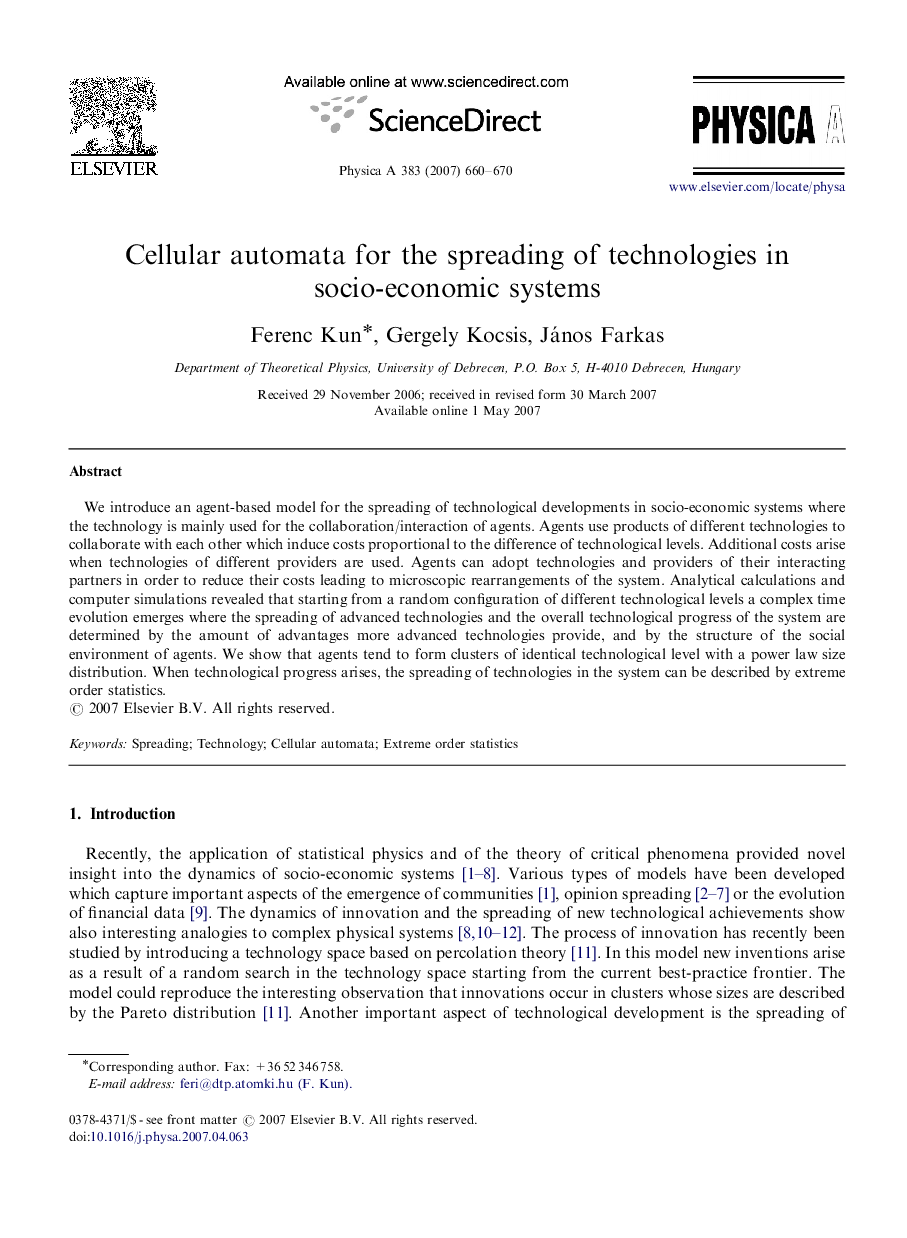| Article ID | Journal | Published Year | Pages | File Type |
|---|---|---|---|---|
| 975505 | Physica A: Statistical Mechanics and its Applications | 2007 | 11 Pages |
Abstract
We introduce an agent-based model for the spreading of technological developments in socio-economic systems where the technology is mainly used for the collaboration/interaction of agents. Agents use products of different technologies to collaborate with each other which induce costs proportional to the difference of technological levels. Additional costs arise when technologies of different providers are used. Agents can adopt technologies and providers of their interacting partners in order to reduce their costs leading to microscopic rearrangements of the system. Analytical calculations and computer simulations revealed that starting from a random configuration of different technological levels a complex time evolution emerges where the spreading of advanced technologies and the overall technological progress of the system are determined by the amount of advantages more advanced technologies provide, and by the structure of the social environment of agents. We show that agents tend to form clusters of identical technological level with a power law size distribution. When technological progress arises, the spreading of technologies in the system can be described by extreme order statistics.
Related Topics
Physical Sciences and Engineering
Mathematics
Mathematical Physics
Authors
Ferenc Kun, Gergely Kocsis, János Farkas,
